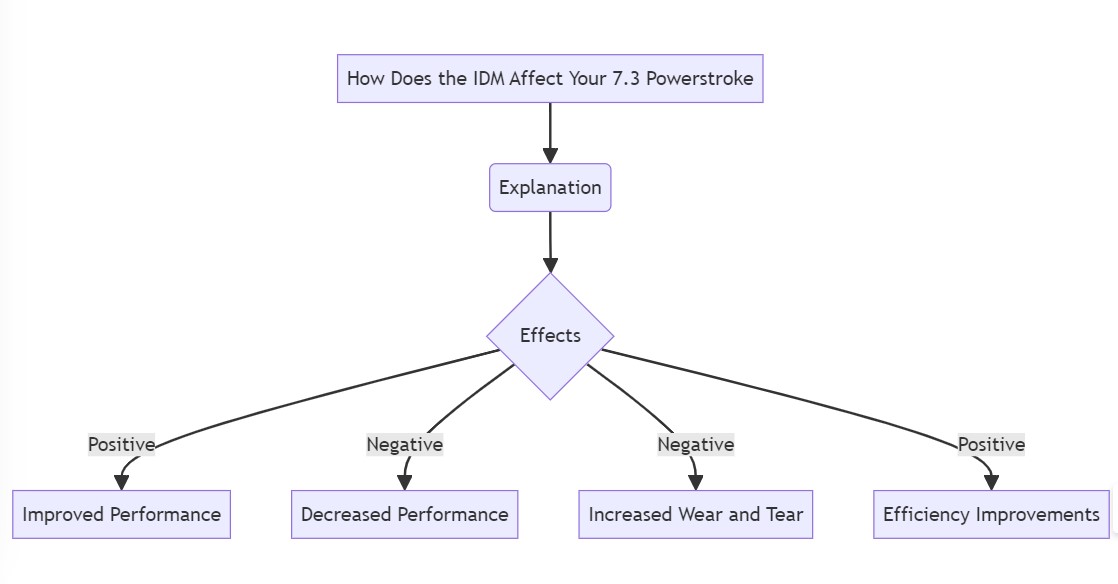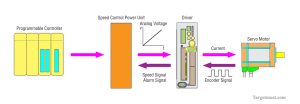Introduction
The 7.3 Powerstroke P1316 Code engine is a reliable and high performing engine, however, as with any machine it can develop certain issues. An example of the most common problems that 7.3 Powerstroke engine owners develop is the P1316 code as it is commonly referred to as power stroke . The power stroke code means a fault with the Injector Driver Module and the Injection Control Pressure sensor which are both vital for the power stroke in the said engine.
The IDM is an essential component of the engine’s fuel injection system. It is responsible for controlling the fuel injectors and ensuring that the proper amount of fuel is delivered for combustion. The ICP sensor, on the other hand, measures the oil pressure in the high-pressure oil system and provides feedback to the Powertrain Control Module (PCM).
When the PCM detects a fault in the IDM or ICP circuit, it triggers the 7.3 Powerstroke P1316 code, indicating a potential problem that needs attention. Ignoring this code can lead to decreased engine performance, lower fuel economy, and potentially more severe damage to the engine.
In this blog, we will explore the P1316 code in more detail and discuss the steps you can take to troubleshoot and resolve the issue. We will cover the key highlights of the code, explain what the Powerstroke P1316 code means, discuss how the IDM affects your 7.3 Powerstroke, provide initial steps for troubleshooting the code, and offer common causes and solutions for the P1316 code. Let’s dive in and get your 7.3 Powerstroke back on track.
Key Highlights
- The P1316 code in a7.3 Power engine indicates a problem with the Injector Driver Module (IDM) or the Injection Control Pressure (ICP) sensor.
- Properly diagnosing and addressing the root cause of the Powerstroke P1316 code is crucial to maintain optimal engine performance.
- The IDM plays a critical role in managing the fuel injectors, ensuring proper fuel delivery for combustion.
- Frayed or damaged wires in the IDM wiring harness are a common cause of the P1316 code.
- Replacing failed IDM components and conducting a thorough inspection and testing of the IDM can help resolve the P1316 code.
Understanding the 7.3 Powerstroke P1316 Code
The P1316 code in a 7.3 Powerstroke engine is an indication of a problem with the Injector Driver Module (IDM) or the Injection Control Pressure (ICP) sensor. The IDM is responsible for controlling the fuel injectors, ensuring proper fuel delivery for combustion. The ICP sensor measures the oil pressure in the high-pressure oil system and provides feedback to the Powertrain Control Module (PCM). When the PCM detects a fault in the IDM or ICP circuit, it triggers the Powerstroke P1316 code, alerting the driver to a potential problem that needs attention.
What is the P1316 Code?
The P1316 code in a 7.3 Powerstroke engine refers to a fault in the Injector Driver Module (IDM) or the Injection Control Pressure (ICP) sensor circuit. The IDM is responsible for controlling the fuel injectors, ensuring proper fuel delivery for combustion. The ICP sensor measures the oil pressure in the high-pressure oil system and provides feedback to the Powertrain Control Module (PCM).
When the PCM detects a fault in the IDM or ICP circuit, it triggers the Powerstroke P1316 code. This code serves as a warning to the driver that there is a potential issue with the IDM or ICP sensor that needs attention. Ignoring this code can lead to decreased engine performance, lower fuel economy, and potentially more severe damage to the engine. It is important to address the P1316 code promptly to maintain the optimal performance and longevity of your 7.3 Powerstroke engine.
How Does the IDM Affect Your 7.3 Powerstroke?
The Injector Driver Module (IDM) plays a crucial role in the operation of your 7.3 Powerstroke engine. It is responsible for controlling the fuel injectors, ensuring proper fuel delivery for combustion. The IDM receives signals from the Powertrain Control Module (PCM) and adjusts the fuel injector pulse width accordingly. This allows for precise control of the fuel injection process, optimizing engine performance and fuel efficiency.
When the IDM malfunctions or experiences a fault, it can lead to various issues with the fuel injection system. This can result in reduced engine performance, rough idling, decreased fuel efficiency, and even engine misfires. The IDM is a vital component of your 7.3 Powerstroke engine, and any problems with it should be addressed promptly to prevent further damage and ensure optimal performance.
Initial Steps for Troubleshooting the Powerstroke P1316 Code
If you encounter the P1316 code in your 7.3 Powerstroke engine, there are several initial steps you can take to troubleshoot the issue. These steps will help you identify potential causes and narrow down the problem before diving into more specific diagnostics.
The first step is to gather the necessary tools and equipment for the troubleshooting process. This may include a scan tool, a multimeter, and other diagnostic equipment. Once you have the tools ready, you can proceed with preparing your vehicle for diagnosis by ensuring it is parked on a level surface and the engine is turned off.
Next, you can perform a Key On Engine Off (KOEO) self-test to retrieve diagnostic trouble codes (DTCs) stored in the PCM. This will provide valuable information about the specific issue causing the Powerstroke P1316 code. We will discuss the step-by-step guide for performing the KOEO self-test in the following section.
Tools and Equipment Needed
To effectively troubleshoot the Powerstroke P1316 code in your 7.3 Powerstroke engine, you will need a few specific tools and equipment.
- Scan tool: A scan tool is necessary to retrieve diagnostic trouble codes (DTCs) stored in the Powertrain Control Module (PCM) and perform various diagnostic functions.
- Multimeter: A multimeter is used to measure electrical voltages, resistances, and currents in the electrical system of your vehicle.
- Test leads: Test leads are used to connect the multimeter to the electrical components for testing.
- Wiring diagrams: Having access to wiring diagrams specific to your 7.3 Powerstroke engine will help you trace and diagnose electrical issues accurately.
- Safety equipment: It is always important to prioritize safety when working on your vehicle. Make sure to wear appropriate personal protective equipment, such as gloves and safety glasses, to protect yourself from potential hazards.
With these tools and equipment, you will be well-equipped to troubleshoot and diagnose the Powerstroke P1316 code in your 7.3 Powerstroke engine.
Preparing Your Vehicle for Diagnosis
Before you begin diagnosing the P1316 code in your 7.3 Powerstroke engine, it is important to properly prepare your vehicle. This will ensure a safe and effective diagnostic process. Here are the steps to follow when preparing your vehicle for diagnosis:
- Park the vehicle on a level surface: Find a flat and stable surface to park your vehicle. This will provide a stable working environment and prevent any unintended movement during the diagnosis.
- Turn off the engine: Make sure the engine is turned off before starting any diagnostic procedures.
- Engage the parking brake: Engage the parking brake to further secure the vehicle and prevent it from rolling during the diagnostic process.
By following these steps, you will create a safe and stable environment to diagnose the Powerstroke P1316 code in your 7.3 Powerstroke engine efficiently.
Conducting a KOEO (Key On Engine Off) Self-Test
One of the initial steps in troubleshooting the P1316 code in a 7.3 Powerstroke engine is to perform a Key On Engine Off (KOEO) self-test. This self-test allows you to retrieve diagnostic trouble codes (DTCs) stored in the Powertrain Control Module (PCM) and provides valuable information about the specific issue causing the P1316 code. The KOEO self-test is relatively simple to perform and can be done using a scan tool.
Step-by-Step Guide to Performing the KOEO Self-Test
Performing a Key On Engine Off (KOEO) self-test is an essential step in troubleshooting the Powerstroke P1316 code in a 7.3 Powerstroke engine. Here is a step-by-step guide on how to perform the KOEO self-test:
- Connect the scan tool: Plug the scan tool into the vehicle’s diagnostic port, usually located under the dashboard on the driver’s side.
- Turn on the ignition: turn the ignition key to the “ON” position with out beginning the engine. This will power up the vehicle’s electrical systems.
- Access the diagnostic menu: Use the scan tool to navigate to the diagnostic menu. Select the option for performing the KOEO self-test.
- Follow the prompts: The scan tool will guide you through the self-test process. Follow the on-screen prompts to initiate the self-test and retrieve the diagnostic trouble codes (DTCs).
- Record the DTCs: Once the self-test is complete, the scan tool will display the DTCs stored in the PCM.
By following these steps, you can perform the KOEO self-test and retrieve the DTCs associated with the Powerstroke P1316 code in your 7.3 Powerstroke engine.
Interpreting the Results of the KOEO Self-Test
After performing the Key On Engine Off (KOEO) self-test in your 7.3 Powerstroke engine, it is important to interpret the results to identify the specific issue causing the P1316 code. The diagnostic trouble codes (DTCs) retrieved during the self-test can provide valuable information about the underlying problem. Here are some key points to consider when interpreting the results of the KOEO self-test:
- Look for codes related to the IDM or ICP circuit: Codes that pertain to the injector driver module (IDM) or the injection control pressure (ICP) sensor circuit are particularly relevant to the P1316 code.
- Pay attention to any other codes present: Sometimes, additional codes may be stored in the PCM that can provide further insights into the issue.
- Note the specific DTCs for further investigation: Write down the DTCs associated with the Powerstroke P1316 code and any other relevant codes for reference during the troubleshooting process.
By carefully interpreting the results of the KOEO self-test, you can narrow down the potential causes of the P1316 code in your 7.3 Powerstroke engine and proceed with more focused troubleshooting steps.
Performing an Injector Buzz Test
In addition to the KOEO self-test, another valuable diagnostic procedure for troubleshooting the Powerstroke P1316 code in a 7.3 Powerstroke engine is the Injector Buzz Test. This test allows you to check the functionality of the fuel injectors and identify any issues that may be causing the code. The Injector Buzz Test is relatively simple to perform and can be done using a scan tool.
How to Perform the Injector Buzz Test
Performing an Injector Buzz Test can help diagnose the P1316 code in your 7.3 Powerstroke engine. Here is a step-by-step guide on how to perform the test:
- Connect the scan tool: Plug the scan tool into the vehicle’s diagnostic port, usually located under the dashboard on the driver’s side.
- Select the Injector Buzz Test: Navigate to the diagnostic menu on the scan tool and select the option for performing the Injector Buzz Test.
- Follow the prompts: The scan tool will guide you through the test process. The test involves activating each fuel injector individually and listening for a buzzing sound.
- Listen for the buzz: As the scan tool activates each injector, listen for a distinct buzzing sound coming from the injectors. The absence of a buzz indicates a potential issue with the injector.
- Record the results: Note down any injectors that do not produce a buzz. This information will help you identify specific injector problems.
By following these steps, you can perform the Injector Buzz Test and identify any issues with the fuel injectors that may be contributing to the Powerstroke P1316 code in your 7.3 Powerstroke engine.
Analyzing the Results of the Injector Buzz Test
After performing the Injector Buzz Test in your 7.3 Powerstroke engine, it is important to analyze the results to identify any issues with the fuel injectors that may be causing the P1316 code. Here are some key points to consider when analyzing the results of the Injector Buzz Test:
- Note any injectors that did not produce a buzz: These injectors may have a malfunction or a wiring issue that needs to be addressed.
- Pay attention to the pattern of non-buzzing injectors: If multiple injectors on the same bank do not produce a buzz, it may indicate a problem with the wiring harness or the Injector Driver Module (IDM).
- Consider other diagnostic information: Combine the results of the Injector Buzz Test with other diagnostic information, such as the KOEO self-test results, to get a comprehensive picture of the issue.
By analyzing the results of the Injector Buzz Test, you can narrow down the potential causes of the Powerstroke P1316 code and proceed with targeted troubleshooting steps.
Common Causes and Solutions for the P1316 Code
The P1316 code in a 7.3 Powerstroke engine can have several potential causes. Identifying the specific cause of the code is crucial for effective troubleshooting and resolution. Here are some common causes of the Powerstroke P1316 code and their corresponding solutions:
- Electrical issues in the IDM wiring harness: Frayed or damaged wires in the IDM wiring harness can cause communication failures between the IDM and the PCM. The solution is to repair or replace the damaged wires and ensure proper connections.
- Injector problems: Faulty or clogged injectors can cause issues with fuel delivery, leading to the Powerstroke P1316 code. The solution is to inspect and clean or replace the affected injectors as needed.
Addressing these common causes of the P1316 code will help resolve the underlying issues and restore proper engine performance in your 7.3 Powerstroke.
Electrical Issues and Their Fixes
Electrical issues in the Injector Driver Module (IDM) wiring harness can often be the cause of the Powerstroke P1316 code in a 7.3 Powerstroke engine. Here are some common electrical issues that may occur and their corresponding fixes:
|
Issue |
Fix |
|
Frayed or damaged wires |
Inspect the IDM wiring harness for any frayed or damaged wires. Repair or replace them as necessary. |
|
Loose or corroded connections |
Check all connections in the IDM wiring harness for looseness or corrosion. Clean or tighten the connections as needed. |
|
Poor grounding |
Ensure that the IDM is properly grounded to the chassis. |
By addressing these electrical issues, you can restore proper communication between the IDM and the PCM, resolving the P1316 code in your 7.3 Powerstroke engine.
Injector Problems and How to Address Them
Faulty or clogged fuel injectors can be another common cause of the P1316 code in a 7.3 Powerstroke engine. Here are some potential injector problems and their corresponding solutions:
- Clogged injectors: If the injectors become clogged with debris or deposits, it can affect fuel delivery and trigger the P1316 code. The solution is to clean the injectors using a suitable fuel injector cleaner or, if necessary, replace the affected injectors.
- Faulty injectors: Injectors that are not functioning properly can also trigger Powerstroke P1316 code. The solution is to test and replace any faulty injectors as needed.
By addressing these injector problems, you can ensure proper fuel delivery and resolve Powerstroke P1316 code in your 7.3 Powerstroke engine.
Readmore >>>>>>>> 6.0 Powerstroke Cylinder Numbers: Unlocking the Power of Your Vehicle
Conclusion
In conclusion, understanding and addressing the P1316 code in your 7.3 Powerstroke is crucial for optimal performance. By following the systematic troubleshooting steps outlined, including conducting diagnostic tests and interpreting results accurately, you can effectively pinpoint and resolve potential issues. It’s essential to pay attention to electrical and injector-related problems, as they are common culprits behind Powerstroke P1316 code. Regular maintenance and prompt action can help maintain the health of your vehicle’s engine. If you encounter any challenges, seek professional assistance to ensure proper diagnosis and resolution. Your commitment to thorough troubleshooting will contribute to the longevity and efficiency of your 7.3 Powerstroke engine.
Frequently Asked Questions
Can driving with a P1316 code damage my 7.3 Powerstroke?
Driving with a P1316 code in your 7.3 Powerstroke engine can potentially cause damage. Ignoring the code can lead to decreased engine performance, lower fuel economy, and potentially more severe damage to the engine. It is important to address Powerstroke P1316 code promptly to maintain optimal performance and prevent further damage.
So what exactly does code P1316 mean?
This error code is telling us the truck’s computer (ECM) isn’t seeing the proper fuel pressure feedback signal from the secondary fuel pump in the tank. That pump works with the inline pump to supply high-pressure fuel to the injectors.
Where is this secondary pump anyway?
It lives inside the fuel tank to help pump fuel on 7.3 Powerstrokes. Not the most accessible place for troubleshooting if you ask me! That’s what makes this code tricky to diagnose.
Alright, so what usually causes it?
Top suspects include a failing pump motor, a clogged fuel filter reducing flow, leaky fuel lines lowering pressure, or faulty wiring interrupting communication back to the ECM. Good ol’ Ford reliability, right?
Got any suggestions before I tear into it?
Simple stuff like replacing the filter, checking for fuel leaks, and doing voltage tests at the pump connector are good places to start. You can also try manually triggering the pump to test operation. Replacing it is usually the fix if those don’t help.
If I ignore it, will that cause problems?
Driving with an unhappy pump can definitely lead to drivability issues down the road like hard starting or losing power over time. Best to tackle this one sooner than later to avoid bigger headaches.
What parts am I looking at?
In many cases, just swapping the whole secondary fuel pump assembly does the trick. Have some basic tools and access to the tank and you’re in business.





